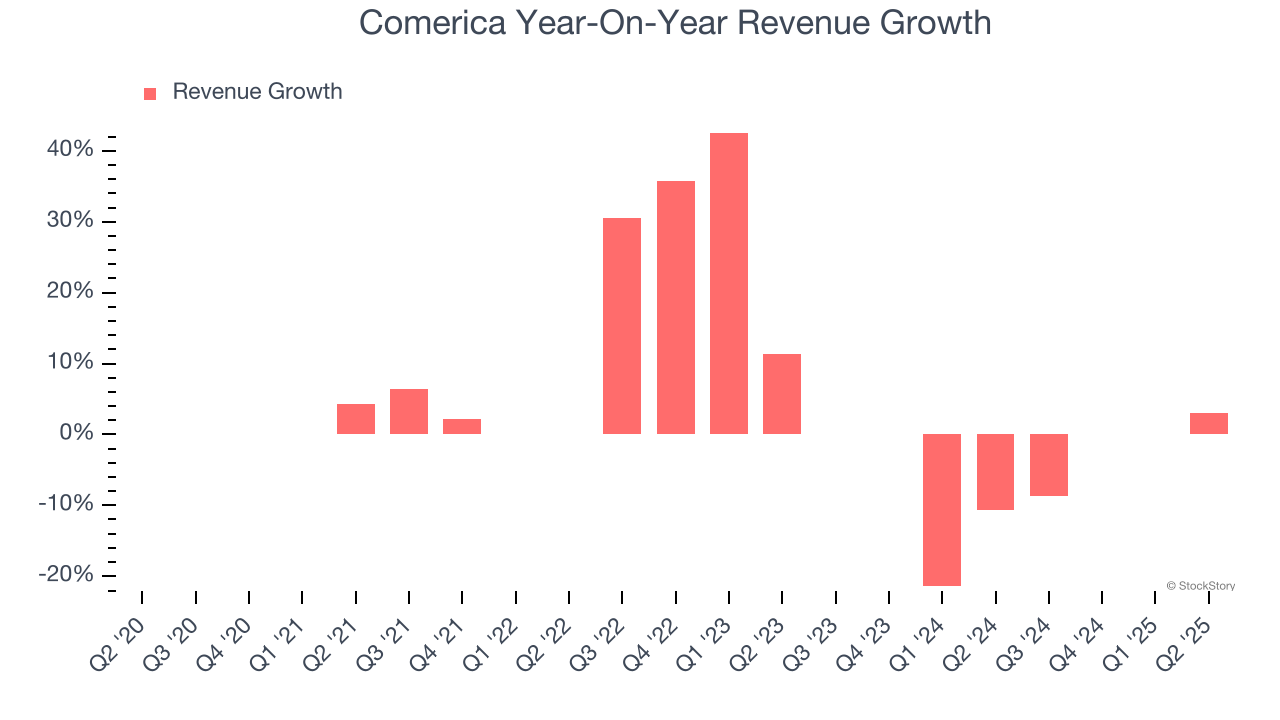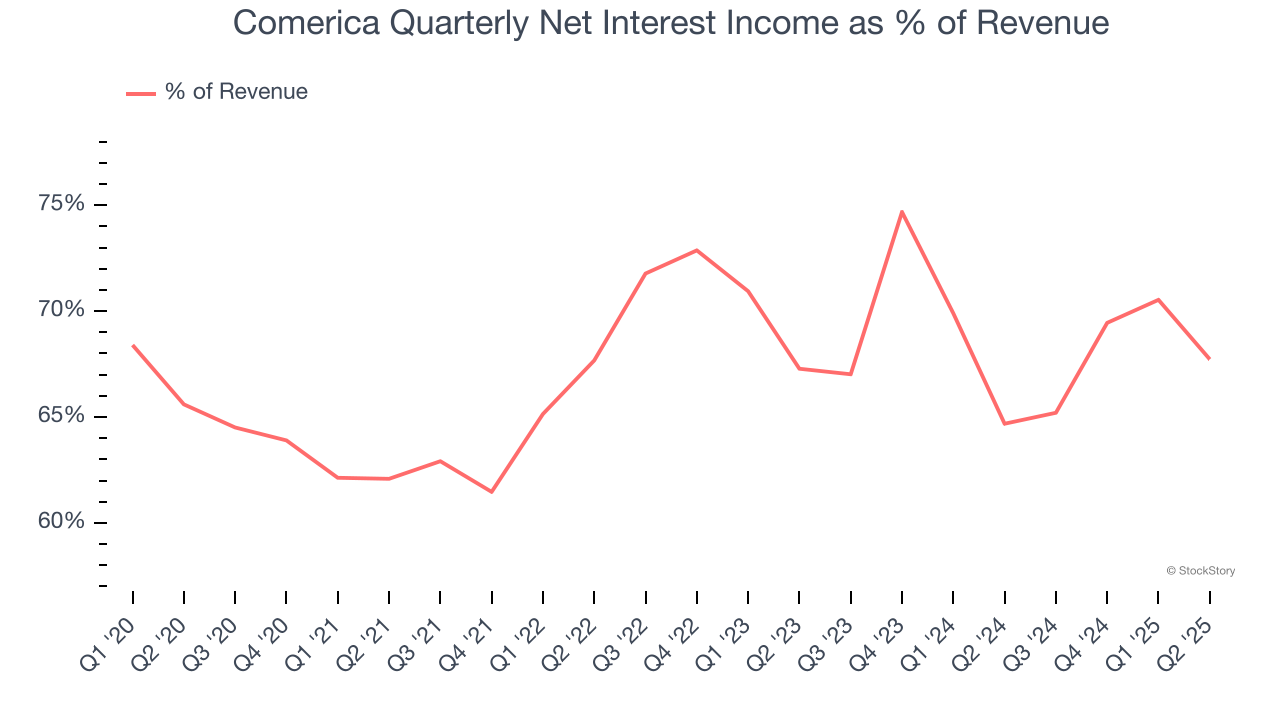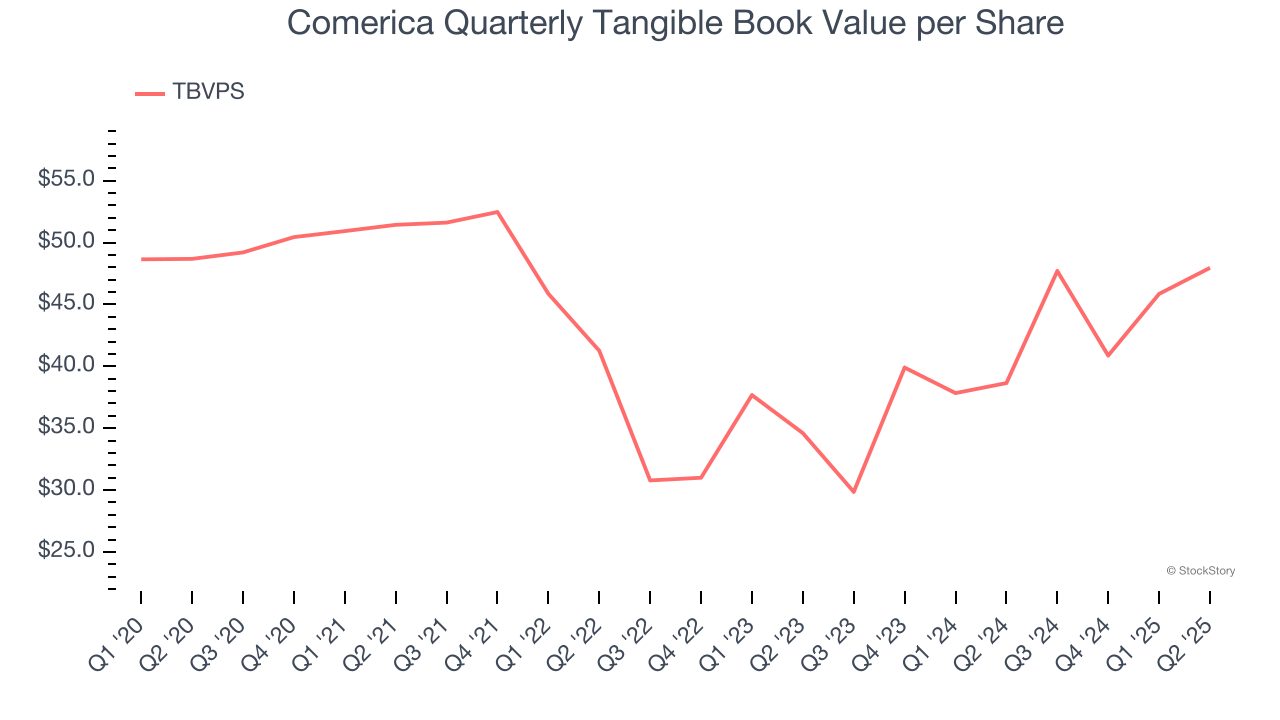
Financial services company Comerica (NYSE: CMA) announced better-than-expected revenue in Q2 CY2025, with sales up 3% year on year to $849 million. Its GAAP profit of $1.42 per share was 13.3% above analysts’ consensus estimates.
Is now the time to buy Comerica? Find out by accessing our full research report, it’s free.
Comerica (CMA) Q2 CY2025 Highlights:
- Net Interest Income: $575 million vs analyst estimates of $572.8 million (7.9% year-on-year growth, in line)
- Net Interest Margin: 3.2% vs analyst estimates of 3.2% (30 basis point year-on-year increase, 5.7 bps miss)
- Revenue: $849 million vs analyst estimates of $843.1 million (3% year-on-year growth, 0.7% beat)
- Efficiency Ratio: 65.8% vs analyst estimates of 70% (4.2 percentage point beat)
- EPS (GAAP): $1.42 vs analyst estimates of $1.25 (13.3% beat)
- Market Capitalization: $8.20 billion
Company Overview
Founded in 1849 during the California Gold Rush era, Comerica (NYSE: CMA) is a financial services company that provides commercial banking, retail banking, and wealth management services to businesses and individuals.
Sales Growth
Two primary revenue streams drive bank earnings. While net interest income, which is earned by charging higher rates on loans than paid on deposits, forms the foundation, fee-based services across banking, credit, wealth management, and trading operations provide additional income.
Regrettably, Comerica’s revenue grew at a tepid 1.2% compounded annual growth rate over the last five years. This was below our standards and is a poor baseline for our analysis.

Long-term growth is the most important, but within financials, a half-decade historical view may miss recent interest rate changes and market returns. Comerica’s performance shows it grew in the past but relinquished its gains over the last two years, as its revenue fell by 8.1% annually.  Note: Quarters not shown were determined to be outliers, impacted by outsized investment gains/losses that are not indicative of the recurring fundamentals of the business.
Note: Quarters not shown were determined to be outliers, impacted by outsized investment gains/losses that are not indicative of the recurring fundamentals of the business.
This quarter, Comerica reported modest year-on-year revenue growth of 3% but beat Wall Street’s estimates by 0.7%.
Net interest income made up 67.1% of the company’s total revenue during the last five years, meaning lending operations are Comerica’s largest source of revenue.

Our experience and research show the market cares primarily about a bank’s net interest income growth as non-interest income is considered a lower-quality and non-recurring revenue source.
Here at StockStory, we certainly understand the potential of thematic investing. Diverse winners from Microsoft (MSFT) to Alphabet (GOOG), Coca-Cola (KO) to Monster Beverage (MNST) could all have been identified as promising growth stories with a megatrend driving the growth. So, in that spirit, we’ve identified a relatively under-the-radar profitable growth stock benefiting from the rise of AI, available to you FREE via this link.
Tangible Book Value Per Share (TBVPS)
Banks are balance sheet-driven businesses because they generate earnings primarily through borrowing and lending. They’re also valued based on their balance sheet strength and ability to compound book value (another name for shareholders’ equity) over time.
This explains why tangible book value per share (TBVPS) stands as the premier banking metric. TBVPS strips away questionable intangible assets, revealing concrete per-share net worth that investors can trust. Traditional metrics like EPS are helpful but face distortion from M&A activity and loan loss accounting rules.
Comerica’s TBVPS was flat over the last five years. However, TBVPS growth has accelerated recently, growing by 17.7% annually over the last two years from $34.61 to $47.96 per share.

Over the next 12 months, Consensus estimates call for Comerica’s TBVPS to grow by 4.2% to $49.99, paltry growth rate.
Key Takeaways from Comerica’s Q2 Results
We enjoyed seeing Comerica beat analysts’ EPS expectations this quarter. We were also glad its tangible book value per share outperformed Wall Street’s estimates. On the other hand, net interest margin missed. Overall, we think this was a mixed quarter. The stock remained flat at $62.41 immediately following the results.
So do we think Comerica is an attractive buy at the current price? What happened in the latest quarter matters, but not as much as longer-term business quality and valuation, when deciding whether to invest in this stock. We cover that in our actionable full research report which you can read here, it’s free.







